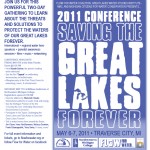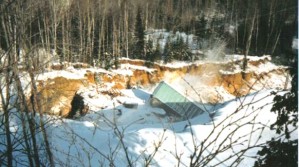FOR IMMEDIATE RELEASE
Aug. 5, 2010
Contact: Steve Casey, 906-346-8535 or Debbie Munson Badini, 906-226-1352
DNRE Releases Newsletter Detailing Selenium Reduction Efforts and Monitoring in Upper Peninsula
The Department of Natural Resources and Environment has released a joint newsletter with Cliffs Natural Resources, detailing several efforts to monitor and reduce selenium discharge into waters near the Empire and Tilden open-pit iron mines in the Upper Peninsula, DNRE officials announced today.
The DNRE and Cliffs Natural Resources began to partner on the selenium issue after monitoring by Cliffs Natural Resources revealed elevated selenium levels in water discharges from the Empire and Tilden mines, which are partially owned and managed by Cliffs Natural Resources. While selenium exists naturally in the environment and in small amounts is essential to life, in excess it can become toxic to humans, fish and birds.
Key information detailed in the newsletter, which is the second in a series of updates planned by the DNRE and Cliffs Natural Resources, includes the following:
• Efforts by Cliffs Natural Resources to reduce the amount of the selenium that enters the waters surrounding the Empire and Tilden mines. The company is investigating how to best reduce selenium discharges, with a project already under way that is expected to reduce selenium discharges by more than 10 percent.
• A recently updated fish consumption advisory for Goose Lake in Richmond Township, issued by the Michigan Department of Community Health. The MDCH has advised the public to eat no more than 12 meals per year, or on average, one meal per month, of northern pike and/or white sucker from Goose Lake, due to elevated levels of selenium found in fish fillets collected from the lake.
• New data from the DNRE that indicate elevated selenium levels found in fish from water bodies near the Empire and Tilden mines. The levels exceed the Environmental Protection Agency’s proposed limits on selenium and may indicate a potential adverse impact on aquatic life.
• An ecological study by Cliffs Natural Resources evaluating the hatching success of birds that nest in the area surrounding the Empire and Tilden mines. The nests of waterfowl, including wood ducks and mergansers, will be monitored, as well as smaller passerine bird species, including tree swallows, bluebirds, wrens and chickadees. Selenium can have an adverse affect on hatching success; the study will assess whether or not selenium concentrations near the mines are having that affect.
• A proposal by the DNRE, unrelated to the selenium issue, to reduce the Total Maximum Daily Load of phosphorus loading into Goose Lake to improve water quality. A history of algae blooms, fish kills, low dissolved oxygen levels and odor problems has indicated that Goose Lake is not meeting water quality standards. Goose Lake’s phosphorus problems originated with the discharge of raw sewage into the lake by the city of Negaunee, a practice that was discontinued more than 50 years ago.
“We are pleased to once again be partnering with Cliffs Natural Resources to provide this information to the public,” said DNRE Water Resource Division regional manager Steve Casey. “The selenium issue is of importance to human and environmental health, and we hope the public will take a moment to review the newsletter online to learn more about what the DNRE and Cliffs Natural Resources are doing to monitor and resolve this issue.”
The newsletter can be viewed online at http://www.michigan.gov/dnrewater. For more information, contact Steve Casey at 906-346-8535.
The Department of Natural Resources and Environment is committed to the conservation, protection, management, and accessible use and enjoyment of the state’s environment, natural resources and related economic interests for current and future generations. Learn more at www.michigan.gov/dnre.
Tina Coluccio
Department of Natural Resources & Environment
Water Resources Division & Office of Geological Survey
420 5th Street
Gwinn, MI 49841
Ph: (906) 346-8520
Fax: (906) 346-4480
ColuccioT@michigan.gov
 350.org
350.org
